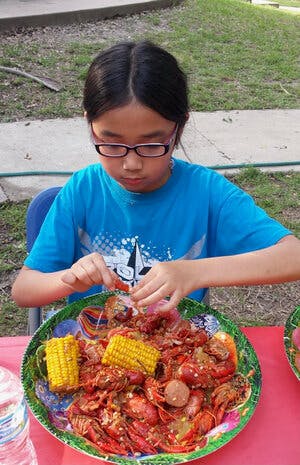Viet-Cajun: The Best Thing to Happen to Fusion

The crustaceans found in the freshwater marshes of the South are the star protagonists in this fusion food story. Crawfish is abundant in Vietnam as fishing is one of the biggest industries in the coastal southeastern Asia country. Following the aftermath of World War II, masses of Vietnamese refugees came to the United States, seeking what was to do in this new age of opportunity. Thus, the birth of Viet-Cajun.
With the French Colonization in Vietnam in the late 1800s, the people Vietnamese were able to pick up French cooking techniques. Iconic Vietnamese dishes such as Bánh mì (using French-style baguettes), Phố, and its seafood were some of the wonderful outcomes from the rough times. And before this, troops from France had a massive invasion of Louisiana in the early 1800s for territory. So when Vietnamese refugees settled near the Gulf of Mexico and assimilated into the fishing industry in the states, many of their commonalities merged from history. Looking at a map, one can identify how similar the Mekong Delta in Vietnam is to the Gulf of Mexico, acting as a comfort area for this new Vietnamese population. The tropical and humid climate allowed for Vietnamese food to thrive, as well as the cities they settled in. Houston, Texas has one of the largest Vietnamese and Immigrant populations in the world, so it was no surprise that Viet-Cajun was able to fuse so well with everything that the city already had to offer.
Coming from a Vietnamese-American family from Louisiana, I have experienced my fair share of Viet-Cajun boils. By age four, I was already peeling my own crawfish because I was eating too fast for my parents to keep up. A traditional Vietnamese boil consists of three main components: the boil, butter, and lots of garlic. The “boil,” typically Zatarain's, is the seasoning for the water that the crawfish, corn, potatoes, and sausage gets cooked in. The garlic-butter was brought in by the Vietnamese, a French influence that is commonly used in Vietnam. After the boil is done, the crawfish and its accouterments go into a bag with the garlic-butter mixture. Lastly, peel and enjoy.
Vietnamese culture highly prioritizes family ethics and this can be seen in its cuisine. Viet-Cajun was the dish that new immigrants could enjoy in these times of hardship, allowing a community environment in what they were eating. When looking at the heart of a seafood boil, it is a wonderful meal to share with a large group of people. Everyone is eating from the same boil, not caring about what they look like, and no one can use their phone because their hands are covered with garlic-butter sauce. Viet-Cajun was the outcome of recipes passed down through lines of history and tradition while symbolizing a community and those who ate it.
Crawfish season typically runs roughly from March through June depending on your area. If you ever have the chance to experience a boil at the coast, I highly recommended the experience. Get together a couple of your friends and family, put on a bib, and happy peeling!
Vivian Nguyen
